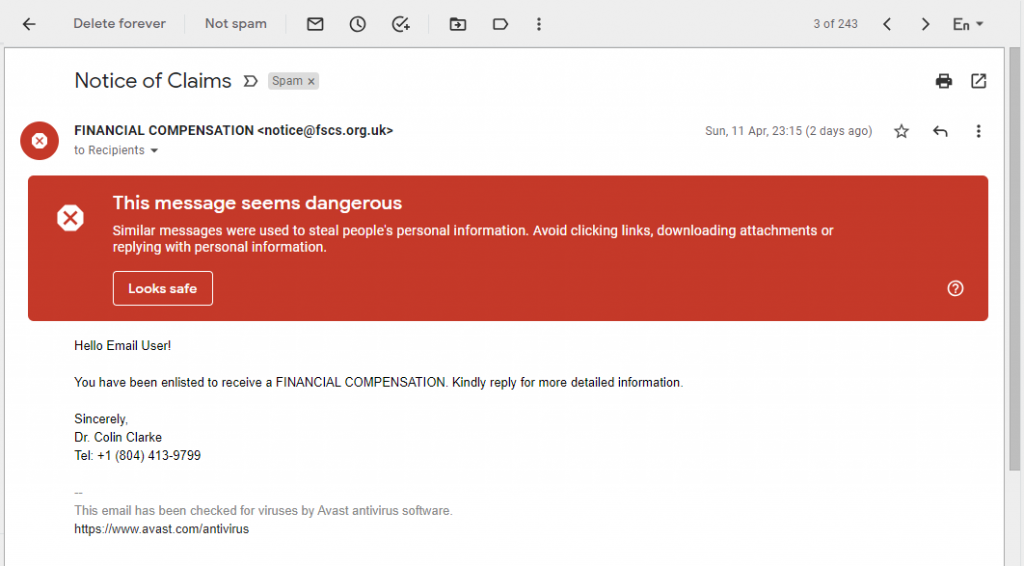Social engineering is any attempt to manipulate a person into revealing personal information with the intent of using that information to perpetrate a crime against the victim.
Scam: “a dishonest plan for making money or getting an advantage, especially one that involves tricking people”. [1]
In the example below, Gmail’s spam filters have moved suspicious e-mails into the Spam Box. Before even opening the e-mail, we can see a subject line that should alert us to a possible scam: “Hello Email User: you have been enlisted to receive a FINANCIAL COMPENS…”
- note the generic salutation: “Hello Email User”
- incorrect language: “enlisted” in place of “selected”
- the grammar error: “receive a FINANCIAL …”
- the breach of netiquette by typing in CAPS

At first glance, it might seem unclear as to what the scammer can possibly gain from this scam, even if you do choose to reply.

If you reply to this e-mail, you have alerted the scammer to two facts:
- The e-mail address is valid and is attended to by a real person
- That person is gullible!
References:
- scam (no date) Cambridge Dictionary. Available at: https://dictionary.cambridge.org/dictionary/english/scam (Accessed: 6 November 2023).
